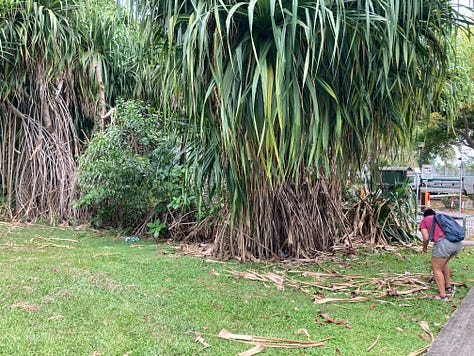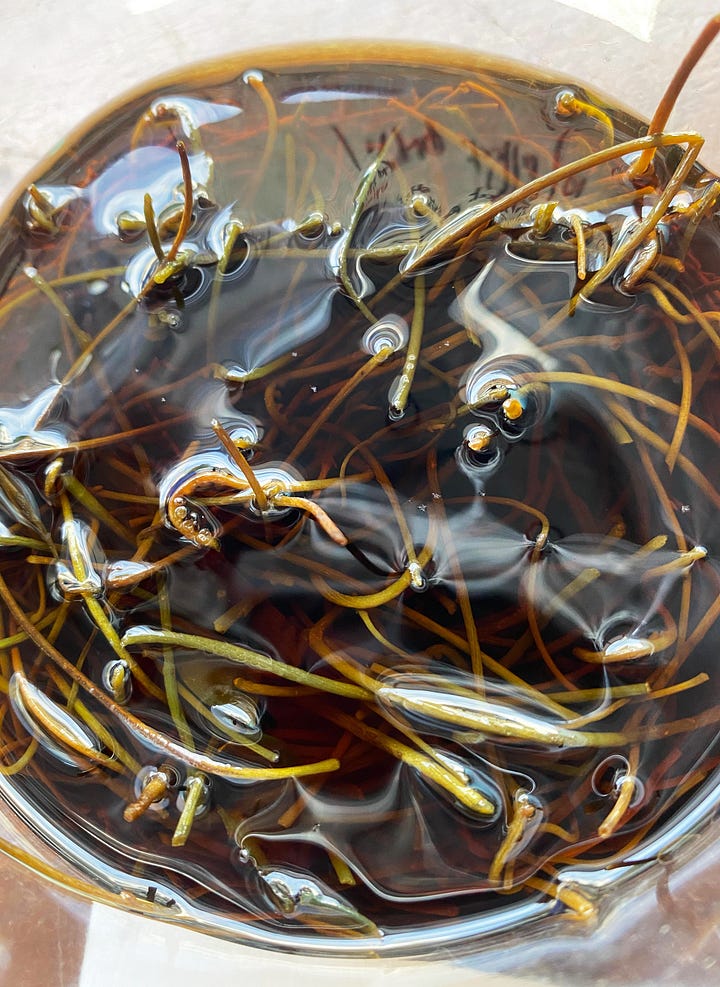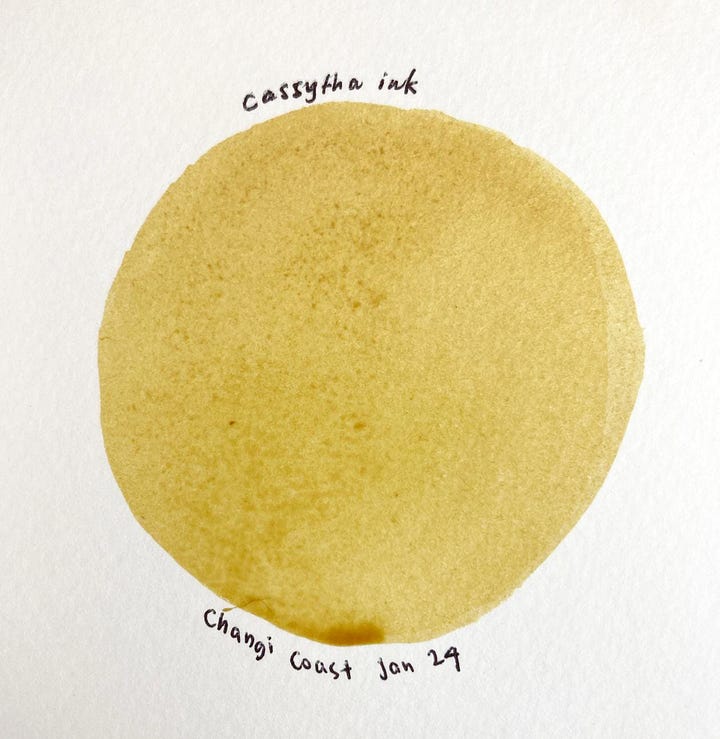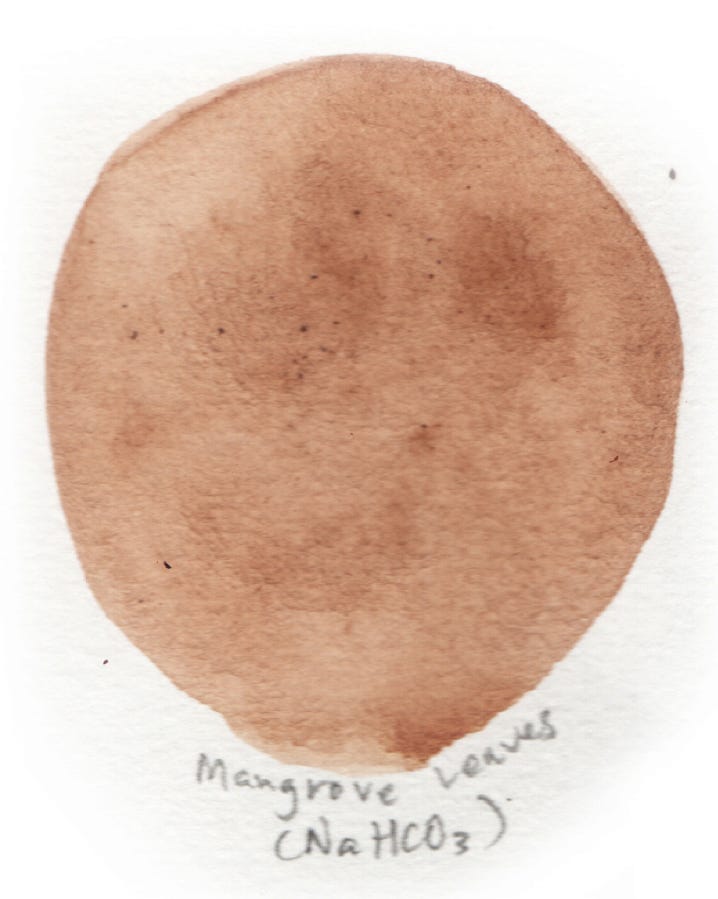Hi folks!
Reflecting upon the time we had the opportunity to work at the start of the year to conduct a natural colour making workshop along Changi Beach with SAM. For us, it was an ideal opportunity to continue documenting the colours that we can find around us in Singapore.
The space we were using was quite a secluded part of Changi Beach; we had to cycle for about 15 minutes from Changi Village to reach there.
Prior to hosting making sessions outside our studio, we would make a few visits to the space to get to know what lives there, and if there are any local changes in the environment. Somehow, that specific stretch along Changi has become one of our sites of choice for collaborations…
Observations on Day 1



The sea was at a low tide, where we could still see various red ochres washed up along the coast line.
Collected bright yellow/orange mangrove leaves that were abundant along the coast. It was difficult to identify which plant it was from exactly, but the colours caught our attention.
Leftover charcoal pieces provided abundant black pigments around the space as this part of the beach has many BBQ pits for public use.
Spotted lots of mynahs resting in a nearby pandanus tree which provides great fibers to play with! The fruit of the pandan itself has a nice soft brush texture. We found several dried and weathered fruits on the ground and had naturally preserved itself in time with the elements.

Observations on Day 2




It was a surprisingly lively day compared to the previous visit, with photographers crowding the beach. There was an upcoming airshow event, with planes practicing their aerial runs over the sea.
The tide was considerably higher, but this time, there were many empty mussel and scallop shells that washed up along the coast line. Many of these shells were intact and had very little barnacles formed on them. It nearly seemed that there was a huge feast of sorts, which was left behind after consuming these molluscs.
The beach morning glories were blooming, adding a splash of colour to an otherwise green landscape. These were easy to spot and gift a magenta colour.
Some Plant Encounters:
Cassytha Filiformis (Love Vine)
A parasitic vine that gifts a beautiful mustard yellow. They don’t have leaves and would pierce into the host plant to derive its nutrients from. You could see “love bites” on the branches of host plant where the vines are attached to! We found this plant attached to the casuarina trees that would often line the beaches around Singapore.




Mangrove Leaves


Although it initially seemed that the leaves would not hold much pigment visually, we were drawn to the slight bouncy/rubbery texture that it possesses. It was a pleasant surprise that the leaves gifted a lovely brown after soaking it in baking soda, a mild alkali, to extract the ink.
Scallop and Mussels


Working with shells was laborious; we had to physically grind it down as much as possible with a mortar and pestle. Unfortunately, the process of grinding resulted in losing the shimmer found along the inner shell wall. The colour resulting from these shells were gentle and subtle, which was Shirin’s personal favourite.
Afterthoughts
Making and documenting these colors help us remember that a space is more than just a physical location; it is also shaped by the flora, fauna, and unique incidents that occur, making each experience truly special. If you would like to start making your own inks, we would recommend to go back to the same sites. You will start to notice the seasons in each space and be able to have a deeper relationship with it too. :)
We are having another session (indoors this time) with artist Shooshie Sulaiman organized by SAM. Both Shooshie and we will exchange about the stories of earth pigments we have encountered in the various spaces visited. Participants can process and make their own earth pigments and binder, from rubber latex, rice starch to the gum arabic.
Registration link is here. We would love it if participants come with your own soil too if you can! We hope to see you there!
Masak on,
Shirin and Liz








